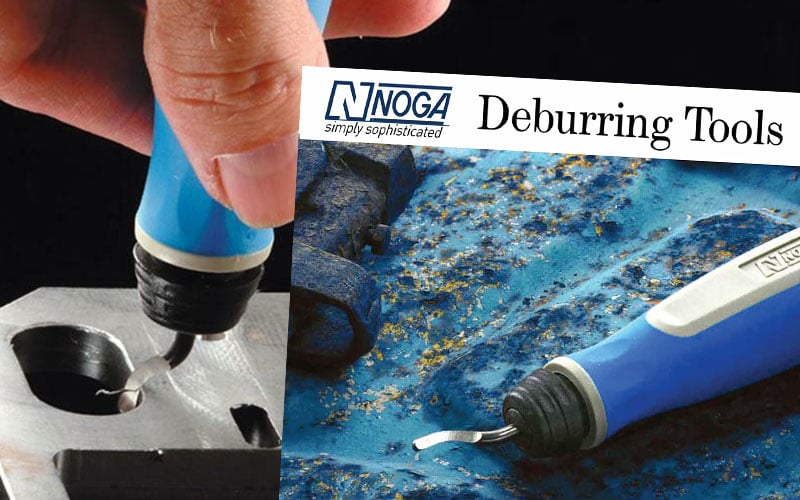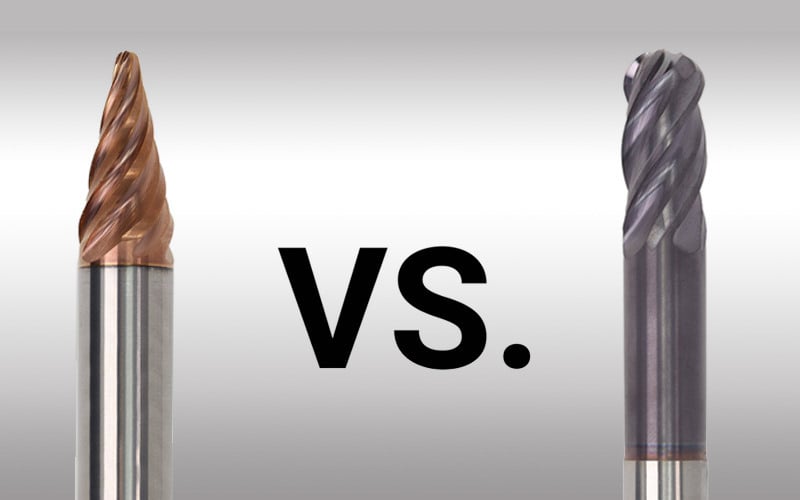Tool Wrap 101: Tool Wrap & Heat Treating FAQs
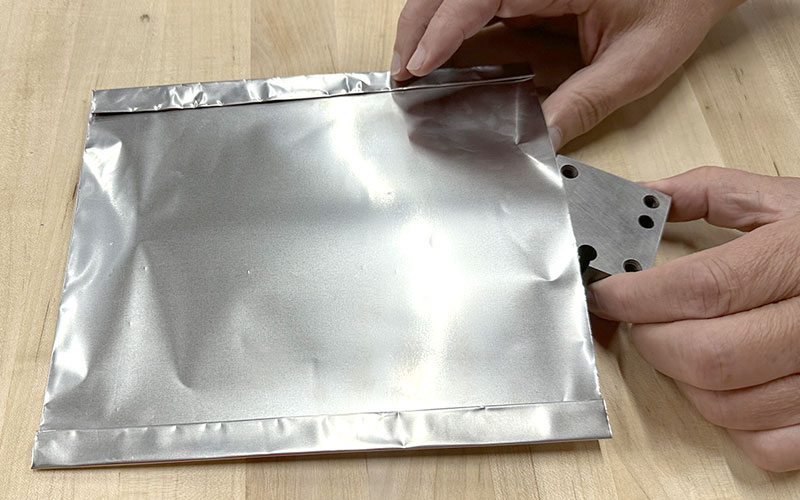
What is Tool Wrap & How is tool wrap used?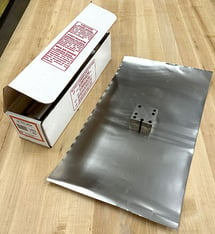
Tool Wrap is a thin, flexible material that is used to protect metal parts during the heat treating process. It can be made from a variety of materials, including stainless steel, nickel, and titanium, and is designed to withstand high temperatures without melting or breaking down. Tool Wrap provides surface protection of tools, dies and other parts during the hardening process by preventing decarburization (scaling). It is used in the heat treating process when a controlled vacuum furnace is not available. Tool Wrap saves time by allowing the hardening process to be done on the premises, without time lost due to parts being sent out for heat treatment. The tool, die or part to be heat treated is placed in an envelope formed by folding a sheet of Tool Wrap in half and carefully sealing the open ends of the envelope. This Tool Wrap envelope locks out the air and closely imitates the results which could be obtained from a vacuum furnace.
Why should I use Tool Wrap?
One of the biggest benefits of using Tool Wrap is that it helps to prevent oxidation and scaling on the surface of the metal. This is important because oxidation and scaling can weaken the metal and make it more prone to cracking or breaking. By using Tool Wrap, you can ensure that your metal tools and parts are protected from these harmful effects.
Another benefit of using Tool Wrap is that it helps to maintain a consistent temperature during the heat treating process. This is important because fluctuations in temperature can cause uneven heating and cooling, which can lead to warping or distortion of the metal. By using Tool Wrap, you can help to ensure that your metal tools and parts are heated and cooled evenly, which will result in a more uniform and consistent final product… all without use of a vacuum furnace!
How much Tool Wrap is necessary?
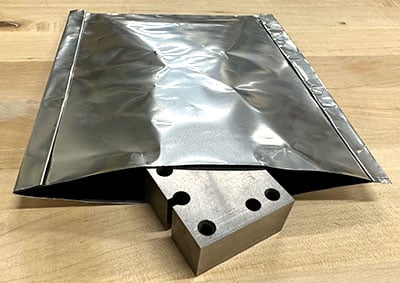
You should cut a piece of Tool Wrap from the roll large enough to cover the complete tool, die or part twice (top and bottom) with the allowance for over lapping by at least 3 inches all around.
How do I cut the Tool Wrap?
The Tool Wrap material can be easily cut with snips or heavy scissors
How do I seal the edges Of The Tool Wrap Envelope?
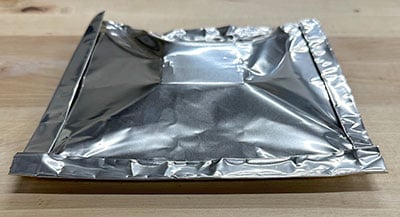
Each open edge of the envelope you created by covering your part on the top and bottom with Tool Wrap should be folded over and creased at least twice. Be sure to expel as much excess air as possible before sealing without damaging the Tool Wrap. Some users prefer using a seam roller tool to ensure a proper, airtight seam.
Is a special tool to seal the Tool Wrap edges necessary?
No, however it is quicker and easier if you use a seam roller to flatten and seal the folded edges. Tool Wrap seam rollers also help to ensure an airtight seam.
What is the correct process to create a Tool Wrap envelope?
You should cut a piece of Tool Wrap from the roll large enough to cover the complete tool, die or part twice (top and bottom) with the allowance for over lapping by at least 3 inches all around the part. The Tool Wrap material can be easily cut with snips or heavy scissors. Each open edge of the envelope you created by covering your part on the top and bottom with Tool Wrap should be folded over and creased at least twice. Be sure to expel as much excess air as possible before sealing without damaging the Tool Wrap.
Must the Tool Wrap package be air tight throughout the entire heating & hardening process?
Usually, if the Tool Wrap envelope is not airtight, the heat draws in excess oxygen which causes pitting and scaling on the surface of your part. However, if it is an odd shaped piece, you may need a vent during the pre-heat process. It is also important to note that there is no difference in uniformity of hardness between loosely or tightly wrapped pieces.
When is venting the Tool Wrap envelope necessary?
A sealed Tool Wrap envelope normally expands and contracts during heating and cooling due to entrapped air. With a particularly large or odd shaped tool, a large amount of entrapped air may strain the foil sufficiently for the tool, die or part to pierce through the Tool Wrap. This usually occurs during the cooling process and, therefore, is not generally a serious problem but can be completely eliminated by a simple vent. A vent can be created by preparing your Tool Wrap envelope the normal way and allow one corner to be open about 1/4 inch. Load the envelope into the hot furnace ensuring the vent remains open. The entrapped air will escape through the vent as the envelope heats, thus eliminating strains from pressure build-up during the heating cycle. As soon as the envelope becomes hot, seal the vent corner by folding it over with a pair of tongs. The envelope is then allowed to remain in the furnace until the heating cycle is completed. The venting procedure also reduces strains during cooling resulting from the rapid collapse of an expanded package.
Can the Tool Wrap envelope be reused?
Tool Wrap should not be reused. The characteristics which makes Type 321 Stainless Steel Tool Wrap or 309 Stainless Steel Tool Wrap ideally suited for decarburization prevention is their titanium content. The titanium acts as a catalyst by reacting with any oxygen under the foil before the oxygen can react with the surface carbon in the tool. After use, the titanium is somewhat depleted, thereby offering a lower level of protection and no safeguards for re-use. In addition, the foil becomes very brittle after use, preventing the wrap from forming a tight seal and making it more prone to tears.
When should a part be double wrapped in Tool Wrap?
Sometimes it is necessary to double wrap the part to ensure that the tool is adequately protected. At high temperatures Tool Wrap becomes very soft and must be handled very carefully to avoid damage. Tools, dies and parts with sharp edges may warrant a double wrap to avoid air exposure from tears. However, a slight increase to the hardening/heating times may have to be made to compensate for the extra Tool Wrap. It is strongly recommended that before using this material for the first time on a part, that a limited amount of experimental work be undertaken to obtain best results. Precision Brand also offers a Tool Wrap for higher temperature hardening which may be more desirable than double wrapping.
Is extra hardening/heating time necessary to compensate for the Tool Wrap envelope?
Users may allow two or three extra minutes during the hardening process to compensate for the heating of the Tool Wrap. Additional time may be necessary for double wrapped parts. It may also be necessary to increase the temperature by up to 75 degrees to compensate for the shielding/insulating effect of the Tool Wrap. The exact amount can only be determined by experimenting with the particular metal being used.
At what temperature are wrapped pieces treated?
Generally, the oven is preheated to a specific temperature. After the part has reached this temperature, it is held at a high heat (soak time) of a higher specified temperature for a specified time per your machinist manual. Quenching follows either in oil, water or in air at room temperature.
What temperature does Type 321 Stainless Tool Wrap work at?
The average operating temperature for Precision Brand Type 321 Stainless Tool Wrap is 1850 degrees F, but it can work in temperatures up to 2000 degrees F. Overall operating temperature for Tool Wrap is very hard to state specifically because these temperatures are contingent upon the length of time in the furnace. At 1850 degrees F Tool Wrap can stay in a furnace without degrading for more than four hours. At 2000 degrees F Tool Wrap can perform successfully up to four hours. Of course, these are just estimates and users also need to be sure their furnaces are calibrated correctly. Other elements which can effect operating temperatures and overall Tool Wrap performance are contaminants within the envelope and improper sealing. So, there is no direct answer to what temperature Precision Brand Tool Wrap works at. Before responding to the operating temperature, the heating times need to be known.
Can Tool Wrap be used to harden tool steels other than air-hardening?
Yes, but oil & water hardening tool steels may show a failure to consistently develop full and uniform hardness. High-speed tool steels, despite the attainment of uniform hardness, create problems because the foil tends to fuse to the piece at high temperature, resulting in an air leak and causes decarburization.
What is decarburization?
Decarburization is the opposite of carburization. It is the loss of carbon from the surface of a tool steel as a result of heating at a high temperature in an atmosphere that reacts with carbon. If the depleted of surface carbon the outer surface will not attain the desired Rockwell and the steel will be left with a soft skin. Tool steel fatigue usually originates in the decarburizated layer.
After heat treating, should the piece be removed from the Tool Wrap prior to quenching?
Not usually, removing the foil prior to quenching is not only difficult, but may result in surface scaling and decarburization from exposure to the atmosphere. However, the insulation effect of the Tool Wrap may sometimes make it necessary to remove it before quenching in order to obtain more rapid hardening.
Will any clean up or surface preparation be required after the heat treating process?
Yes and no, a blue or tan surface color will be evident, attributable to oxidation by entrapped air. The discoloration is harmless and can easily be removed by buffing, if desired. However, this light oxide film actually improves performance in many tooling operations because it helps prevent metal pick-up and aids in holding the die lubricant.
Is Tool Wrap available in different materials?
When it comes to choosing the right Tool Wrap for your needs, there are a few things to consider. First, you'll want to choose a material that is appropriate for the temperature range you'll be working with. Stainless Steel is a popular choice for lower temperature applications, while nickel and titanium are better suited for higher temperatures. Standard Type 321 Stainless Steel Tool Wrap will work in temperatures up to 2000 degrees F. Precision Brand Tool Wrap is also available in a Type 309 Stainless Steel, a high-temp material which works in temperatures up to 2240 degrees F.
Does Tool Wrap come in different thicknesses?
Thicker tool wrap will provide more protection and insulation, but it can also be more difficult to work with. Thinner tool wrap may be easier to handle, but it may not provide as much protection. Other thicknesses are available from Precision Brand in 309 and 321 Stainless Steel as a special order. There is a minimum material requirement for all special orders, which varies with thickness. To obtain a quote, contact the A&M Industrial customer service team at 800.864.2660.
Why does the Tool Wrap stick to a tool, die or part after heat treating?
At higher temperatures the Tool Wrap may adhere or weld to the piece during hardening. This is usually caused by excessively tight wrapping, uneven support of the work surface such as a heat treating basket or mesh, or oil or residue left on the metal surface. Alternatively, if the part is “clean”, loosely wrapped and smooth work support surfaces are used and this still results in sticking, a liberal dusting of aluminum oxide or magnesium oxide eliminates this problem. Again, it is strongly recommended that before using this material for the first time that a limited amount of experimental work be undertaken.
Can small parts be bright hardened?
Yes, bright hardened parts can be attained by using Precision Brand Tool Wrap. To obtained maximum brightness the part must be thoroughly cleaned and free from oil stains before heat treatment. The piece must be securely sealed in a Tool Wrap envelope with several extra edge folds to ensure that no air can enter and the parts does not pierce the Tool Wrap. It is essential, however, that there is a rapid transfer of the envelope from the furnace to the quenching medium in order to obtain best results. Occasionally, parts may have to be removed from the Tool Wrap envelope before quenching. The Tool Wrap acts as an insulator thus making it necessary to remove the Tool Wrap before quenching in order to obtain more rapid hardening/tempering. This can easily be done by slitting the envelope and allowing the part to fall into the quench immediately.
Are leather/thermo gloves necessary when using Tool Wrap?
Utilize extreme caution when preparing material for use. Leather gloves are recommended to prevent accidents and reduce the risk of being cut. Thermo gloves are recommended when working with high heat.
Your Source For Precision Brand Solutions
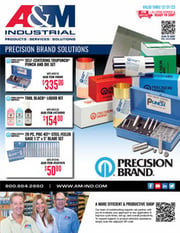 Find the latest Precision Brand solutions, including Feeler Gages, Punch and Die Sets, Shim Stock, Tool Black, and more, on promotion for a limited time only. Rely on A&M Industrial for a wide range of mill supplies, including power tools, tool wrap, degreaser, lubricants and more.
Find the latest Precision Brand solutions, including Feeler Gages, Punch and Die Sets, Shim Stock, Tool Black, and more, on promotion for a limited time only. Rely on A&M Industrial for a wide range of mill supplies, including power tools, tool wrap, degreaser, lubricants and more.


